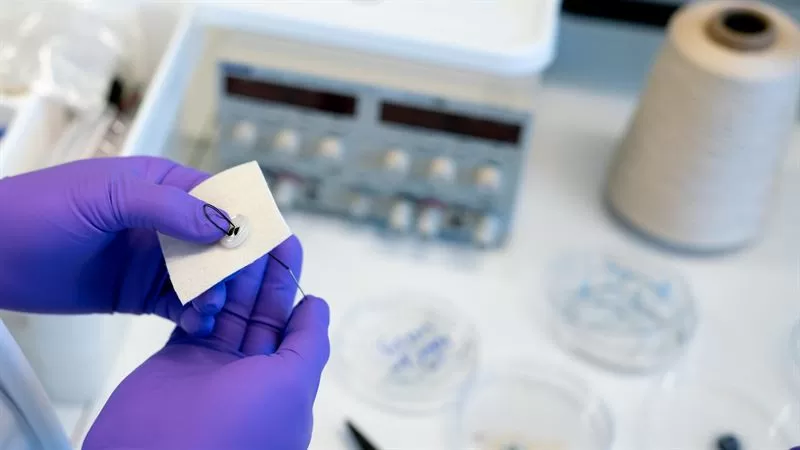GOTHENBURG, SWEDEN – A research team led by Chalmers University of Technology has developed a new type of electrically conductive thread that could revolutionize wearable electronics. The thread, which is made from silk coated with a conductive polymer, has the potential to turn textiles into electricity generators. This could lead to the development of self-powered wearable devices that can monitor our health or charge our mobile phones.
“The polymers that we use are bendable, lightweight, and are easy to use in both liquid and solid form,” says Mariavittoria Craighero, a doctoral student at Chalmers University of Technology and first author of the study. “They are also non-toxic.”
The new thread is made using a method similar to that used in previous studies, but with one key difference: it does not contain any metals. This makes it more sustainable and environmentally friendly.
In tests, the researchers found that the thread was able to generate electricity when placed between a hot and a cold surface. The amount of electricity generated depended on the temperature difference and the amount of conductive material in the textile.
The researchers believe that the new thread has great potential for use in wearable electronics. They are now working on developing an automated process to produce the thread on a larger scale.
“We have now shown that it is possible to produce conductive organic materials that can meet the functions and properties that these textiles require,” says Christian Müller, Professor at Chalmers University of Technology and research leader of the study. “This is an important step forward. There are fantastic opportunities in thermoelectric textiles and this research can be of great benefit to society.”
More about the study
The scientific Article Poly(benzodifurandione) Coated Silk Yarn for Thermoelectric Textiles is published in Advanced Science. Authors are Mariavittoria Craighero, Qifan Li, Zijin Zeng, Chunghyeon Choi, Youngseok Kim, Hyungsub Yoon, Tiefeng Liu, Przemysław Sowiński, Shuichi Haraguchi, Byungil Hwang, Besira Mihiretia, Simone Fabiano and Christian Müller. The researchers are active at Chalmers University of Technology, Linköping University and Chung-Ang University in Seoul, South Korea. The research has been funded by the EU’s Horizon 2020 research and innovation programme, through the Marie Skłodowska-Curie project HORATES, the Knut and Alice Wallenberg Foundation, the European Research Council (ERC), the Swedish Research Council and Linköping University.
More about the research field
Interest in organic electronics with conjugated polymers has grown a lot in recent years. Conducting polymers have a chemical structure that allows them to conduct electricity similar to silicon, and at the same time they have the physical properties of plastic materials which makes them flexible. Research on conducting polymers is ongoing in many areas such as solar cells, the Internet of Things (IoT), augmented reality (AR), robotics and various types of portable electronics. In addition to the research group behind the current study, there are two other research groups active in the research field at the same department at Chalmers University of Technology.

